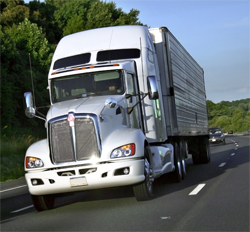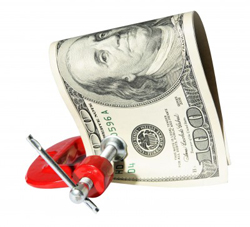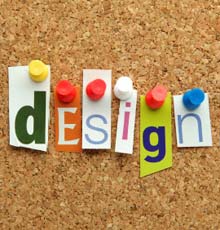Trade Show Planning: Creating a Timeline
Organizing your company’s participation in upcoming trade shows can be stressful and requires precision and strong organizational skills. To make it a tad less stressful, prepare a timeline of things that must get done and when they must be accomplished.  This alone can help you stay on track, reduce some of the nail-biting and prevent missed deadlines that can cost you down the road in lost discounts, rush fees and missed opportunities.
This alone can help you stay on track, reduce some of the nail-biting and prevent missed deadlines that can cost you down the road in lost discounts, rush fees and missed opportunities.
There are deadlines for choosing an exhibit space, for ordering show services, and for creating your exhibit. There is no one right way to create a timeline, as they can be organized in a myriad of ways (deadlines, tasks, etc.). However, once you come up with one that works for you, use it as a master template for creating timelines for all future shows.
Here are some general guidelines to help you in your planning:
12+ months out: Determine your objectives
Identify the role that trade shows will play in your overall marketing and sales plan. Will trade shows be primarily used to generate sales leads and prospective customers?
Conduct research on what shows will best achieve these objectives.
Determine a budget and project your return on investment (ROI).
9-12 months out: Initial planning mode
Compile a list of specific objectives for each show, such as number of leads, number of products sold, amount of publicity sought, etc.
Identify the booth size needed and type of display, along with marketing collateral and promotional items.
Register for the show and reserve your space with show management and request full details of exhibit requirements (deadlines, shipping information, etc.).
Create a trade show marketing plan that uses a mix of promotional methods to reach sales prospects.
6-9 months out: Fine-tuning your message
Develop your sales message that will communicate a compelling story and deliver the key points you want to make in as short a time as possible (preferably less than 30 seconds).
Choose an exhibit company to help create and deliver an exhibit that will fit your needs and budget. Research their capabilities, experience, and design talent, and be sure and check references of past clients.
Determine what promotional strategies, such as giveaways and attractions, you’ll use to draw attendees out of crowded aisles and into your booth.
4-6 months out: Tying up loose ends
Order promotional items (giveaways, takeaways, prizes, etc.)
Confirm delivery dates with your exhibit company to assure your display will be ready on time.
Determine who will be staffing your booth at the show, develop schedules, and plan training sessions.
Make travel and hotel reservations, if you haven’t already.
Determine how your exhibit and accessories will be shipped to the show.
Launch pre-show marketing initiatives.
1-3 months out: Check and double check details
Assemble packets of information for post-show marketing follow-up.
Contact show management for any last-minute details, changes, etc.
Finalize production of display, promotional items, and marketing materials and confirm shipping date.
Schedule dinners, briefings, or other meetings with customers, media, or sales staff.
Re-confirm hotel and travel arrangements. Last minute snafus are costly and can be eliminated by doing one last review of all your staff’s travel plans.
One week out: Crunch time.
Wrap up staff training of booth personnel.
Confirm shipping arrival dates for your display, marketing materials and promotional items.
There’s always going to be that one thing that completely slips your mind, however, having a timeline can help you stay focused, and more importantly, stay on schedule.
Choosing a Tradeshow Display Shipping Carrier
When shipping tradeshow displays, you generally have two types of carriers to choose from:
- Van lines like Atlas, Bekins, United, Allied, etc. who also do moving of high-value products and household goods.
- Motor freight companies who move commodities, manufactured goods, etc.
 If your exhibit is palletized or crated, you have the option of shipping via van lines or motor freight. If your materials are not crated (also known as “loose” or “pad wrapped”) you must go with a van line.
If your exhibit is palletized or crated, you have the option of shipping via van lines or motor freight. If your materials are not crated (also known as “loose” or “pad wrapped”) you must go with a van line.
Motor freight companies operate on a hub system very much like the airlines, so displays that are loaded on a truck at your facility may be transferred one, two or even more times before reaching their final destination. This extra handling exposes your materials to more wear and tear and greatly increases the possibility of damage. Motor freight shipping costs are usually calculated by weight, although larger, lightweight items may be subject to a different cost calculation called “dimensional weight”.
The advantage to van line shipments is that the trucks are usually going directly from your warehouse to the convention center, so materials are less likely to be transferred from one truck to another. Moving vans use air ride trailers that cushion bumps along the way. Van lines almost always charge by the amount of floor space in the trailer that your materials require.
Total shipping cost can vary a great deal. It is generally assumed that motor freight is less expensive but that is not always the case. Check with your traffic department to see what kind of discounts your company gets from various carriers, make sure that your carrier has tradeshow specific experience and request quotes.
Make sure that your chosen carrier provides you with a way to track your shipment and verify delivery. Last, but certainly not least, be sure to ask your carrier about insurance coverage. The standard coverage that they provide is usually less than $1.00 per pound which won’t even cover the replacement of the crates, let alone the contents.
Do your homework and you can minimize cost. Or, leave the homework to us – we’ll take care of knowing where your tradeshow display is, where it needs to go, and getting everything shipped on time. With our national network of facilities and climate-controlled environments, we are always close by, so shipping your tradeshow exhibits is never a problem. Let’s talk.
Tradeshows on a Shoestring Budget
Attending and exhibiting at a tradeshow can lead to excellent bottom-line benefits for your company: exposure to a highly targeted audience; opportunity to pitch your company’s marketing message; generation of sales leads; and the opportunity to learn more about your industry through panel discussion, speeches, and seminars.
 The reality, though, is that in many companies, marketing budget dollars must be spent carefully and each expense may be scrutinized closely. No need to remove tradeshows completely from your marketing plan, however. Take a critical look at your tradeshow expenses and you might find some creative ways to carve some costs out of your overall tradeshow budget.
The reality, though, is that in many companies, marketing budget dollars must be spent carefully and each expense may be scrutinized closely. No need to remove tradeshows completely from your marketing plan, however. Take a critical look at your tradeshow expenses and you might find some creative ways to carve some costs out of your overall tradeshow budget.
Here are a few areas where you might be able to cut costs:
Transportation. This can typically account for a significant portion of your tradeshow budget so it’s the first place you should look at to trim down on expenses. The biggest thing to keep in mind: plan early! Most companies will know six months to a year out that they are going to be exhibiting at a particular show, so plan ahead and make your airline reservations early. Airlines penalize last-minute business travelers with high-priced tickets. Fly everyone in the day before the show and fly them out the last day of the show to save on extra food and lodging costs.
Also, keep in mind other modes of transportation if the event isn’t that far away. Renting a van to take a large group of people or partner with another exhibitor in your area and charter a bus, which can significantly cut down on travel expenses.
Hotel. Typically larger conferences will offer attendees and exhibitors rooms at hotels within a close proximity to the event at a discounted rate. Take advantage of this savings. Booking an economy hotel farther away might seem like a smart strategy, but once you add up taxi fares, it might not make sense. Double up employees in each room to instantly cut hotel costs in half.
Also, if you’re attending multiple events throughout the year, look at hotel chains that offer special discounts for multiple hotel stays or those that offer special member programs that offer additional discounts, such as free nights after a certain amount of stays. Also, book at hotels that offer free breakfast. It might sound silly, but feeding a large group of people breakfast every day will add up to hundreds of dollars after a multi-day stay, and possibly bloat your budget.
Booth rentals. You can instantly shave hundreds off your budget by renting your tradeshow booth. This can be especially helpful for companies that want to exhibit but need to cut tradeshow costs in the short-term as well as for those companies that don’t attend shows frequently. Make sure you read your rental agreement carefully and understand the terms of it. Find out what accessories will come with the booth and what you’re responsible for bringing. Be creative and enhance your rental booth with banner stands, literature racks, lighting and other extras that can increase traffic to your booth.
Shipping. Exhibition halls often add significant costs to receiving and storing your freight and associated material for your company. Instead, ship things such as literature and giveaways directly to your hotel. Mark shipped boxes with a shipping label that reads, “Hold at front desk for (your name)’s arrival.” Hotels do not charge for accepting and holding shipments for guests.
Design Effective Tradeshow Graphics and Maximize ROI
Graphics Are the Most Important Design Element of Your Trade Show Display
For the vast majority of tradeshow displays, the graphics are the most important design element. No matter how beautiful a display is, if you hang poorly designed graphics on it, it just looks awful. And attractive graphics aren’t enough – they must be effective as well if you want to get the maximum ROI on your tradeshow dollars. In order to get the best graphic design results, you should start by carefully considering your objectives and how your tradeshow display’s graphics might help you achieve them.
 Too often, companies choose to just blow up their logo and a few of their magazine ads or a page from their website, stick them on the backwall and call it a day. People who view a web page or magazine ad spend considerably more time reading and also expect to get complete information from this type of graphic. Tradeshow graphics, on the other hand, need to be read and understood in the 3 seconds that it takes an attendee to walk past your booth.
Too often, companies choose to just blow up their logo and a few of their magazine ads or a page from their website, stick them on the backwall and call it a day. People who view a web page or magazine ad spend considerably more time reading and also expect to get complete information from this type of graphic. Tradeshow graphics, on the other hand, need to be read and understood in the 3 seconds that it takes an attendee to walk past your booth.
Let’s consider the graphics on a standard 10-foot backwall display. The normal way to arrange graphics is to put your company’s name and logo on a large sign at the top. This is just fine if your company is Coca-Cola, or Nike, but lesser known brands might want to add a few words that describe what the company does or maybe a bold statement that grabs the attention of the visitor.
Design Graphics to Support Your Sales Presentation
The balance of the graphics in a small booth can be used to create an atmosphere, list features and benefits of products or show products in use. I prefer to design graphics that support a sales presentation. Once a prospect has stopped at your booth, the booth staff can easily do a brief sales presentation using the graphics as visual support.
Once you have established your objectives, it makes sense to take advantage of the experience an exhibit designer brings to the table. Share with them your goals and allow them to provide input on graphics that are going to be displayed.
Archives
- July 2021
- June 2021
- May 2021
- April 2021
- October 2018
- September 2018
- August 2018
- July 2018
- June 2018
- May 2018
- April 2018
- March 2018
- February 2018
- January 2018
- December 2017
- November 2017
- October 2017
- September 2017
- August 2017
- July 2017
- June 2017
- May 2017
- April 2017
- March 2017
- February 2017
- January 2017
- December 2016
- November 2016
- October 2016
- September 2016
- August 2016
- July 2016
- June 2016
- May 2016
- April 2016
- March 2016
